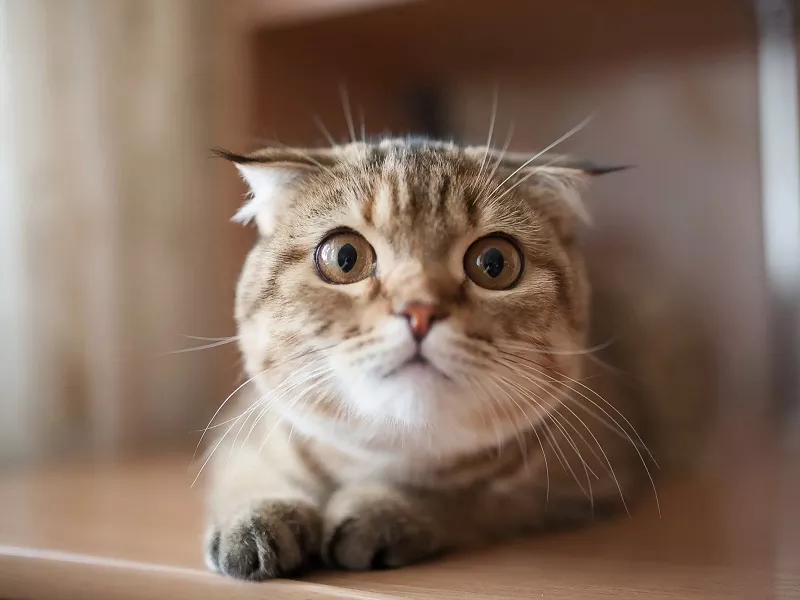Ragdolls are known for their affectionate and gentle nature, making them great family and personal pets. However, in some cases, a Ragdoll may exhibit behavior that may seem out of character, such as being “mean” or being aggressive. In this article, we’ll explore the Ragdoll’s personality in terms of its breed, health concerns, and socialization.
1. Understanding the Ragdoll Cat Breed
Before delving into the reasons for aggressive behavior, let’s first understand the Ragdoll cat breed. Ragdolls are large, semi-longhaired cats with striking blue eyes and a docile temperament. They are known for their affectionate and laid-back nature, often seeking human companionship and enjoying being held and cuddled. Ragdolls are not typically aggressive by nature, which makes their sudden aggressive behavior a matter of concern for their owners.
2. Health Issues and Pain
Ragdoll cats are beloved for their affectionate and gentle nature, making them popular pets for families and individuals. However, like all living creatures, Ragdoll cats are susceptible to certain health issues that can cause discomfort and pain. As responsible pet owners, it is essential to be aware of these potential health problems and recognize the signs of pain in order to provide the best possible care for our feline companions. In this article, we will explore common health issues that may affect Ragdoll cats and how to identify and address pain in these beloved pets.
Dental Problems:Dental issues are common in cats, including Ragdolls, and can lead to considerable discomfort. Dental problems can range from tartar buildup and gingivitis to more severe issues like tooth decay and abscesses. Cats with dental pain may exhibit signs such as drooling, difficulty eating, pawing at the mouth, or a reluctance to be touched around the head and mouth area. Regular dental check-ups, dental cleanings, and a balanced diet that supports oral health are essential in preventing and managing dental problems in Ragdoll cats.
Joint and Mobility Issues:As Ragdoll cats age, they may develop joint problems such as osteoarthritis, which can cause pain and stiffness. Ragdolls are generally a larger breed, and their size can put additional strain on their joints. Signs of joint pain may include limping, difficulty jumping or climbing, decreased activity levels, and a reluctance to be handled or touched. Providing a comfortable and accessible environment, maintaining a healthy weight, and considering joint supplements can help alleviate pain and improve mobility in aging Ragdoll cats.
Urinary Tract Problems:Urinary tract issues, such as urinary tract infections or blockages, can be painful and distressing for Ragdoll cats. Cats with urinary problems may urinate outside the litter box, strain while urinating, display vocalization or agitation during urination, or show signs of discomfort when touched in the lower abdominal area. Prompt veterinary attention is crucial in diagnosing and treating urinary tract problems to prevent further complications and provide relief from pain.
Gastrointestinal Disorders:Ragdoll cats may experience gastrointestinal issues, including inflammatory bowel disease, gastritis, or constipation. These conditions can cause abdominal pain and discomfort. Cats with gastrointestinal problems may exhibit signs such as vomiting, diarrhea, bloating, or a hunched posture due to abdominal pain. A balanced and easily digestible diet, adequate hydration, and prompt veterinary care can help manage gastrointestinal issues and alleviate pain in Ragdoll cats.
Dental Procedures and Pain Management:In some cases, Ragdoll cats may require dental procedures or surgeries to address dental issues or other health concerns. After such procedures, pain management is essential to ensure the cat’s comfort and aid in a smooth recovery. Veterinary professionals may prescribe pain medications or recommend alternative pain relief methods suitable for Ragdoll cats.
3. Fear and Anxiety
Cats, including Ragdolls, can exhibit aggressive behavior when they feel threatened, scared, or anxious. Changes in the environment, introduction to new pets, or unfamiliar visitors can trigger fear responses, leading to defensive aggression. Identifying potential stressors and providing a safe and secure environment for the cat can help alleviate their anxiety and reduce aggressive behavior.
4. Lack of Socialization
Proper socialization during a cat’s early developmental stages is vital in shaping its behavior and temperament. If a Ragdoll kitten has not been adequately exposed to various people, places, and experiences during their formative weeks, they may develop fear and uncertainty, which can manifest as aggression in certain situations. Early socialization and positive interactions with various stimuli can help prevent aggression later in life.
5. Overstimulation and Boundaries
Ragdoll cats are affectionate and enjoy human attention. However, like all animals, they have their limits. Overstimulation, such as excessive petting or handling, can lead to irritation and aggressive responses. Understanding a Ragdoll cat’s boundaries and recognizing signs of discomfort can prevent aggressive outbursts and foster a positive relationship.
6. Redirected Aggression
Ragdoll cats, like other feline species, may display redirected aggression when they are stimulated or agitated by one thing and then direct their aggression towards something else. For example, if a Ragdoll cat sees another cat or animal outside the window, they may become agitated and take out their frustration on a family member or pet within reach. Identifying triggers and avoiding situations that lead to redirected aggression is essential in managing such behavior.
Conclusion
While Ragdoll cats are generally known for their gentle and friendly nature, there can be instances when they display aggressive behavior. Understanding the possible reasons behind a Ragdoll cat’s aggression is essential in addressing the issue effectively. Health problems, fear, anxiety, lack of socialization, overstimulation, and redirected aggression are some key factors that can contribute to aggressive behavior in Ragdoll cats. As responsible pet owners, it is crucial to provide a safe and nurturing environment, address potential health issues promptly, and seek professional advice if needed. With patience, understanding, and proper care, the aggressive behavior in a Ragdoll cat can often be successfully managed, allowing them to thrive as the affectionate and loving companions they are known to be.
Relatd Topics:


























